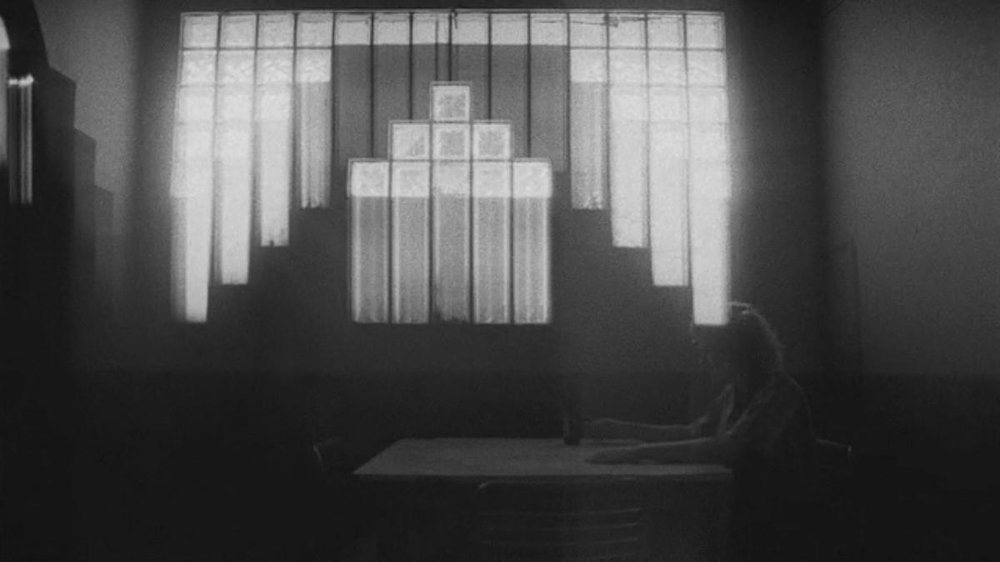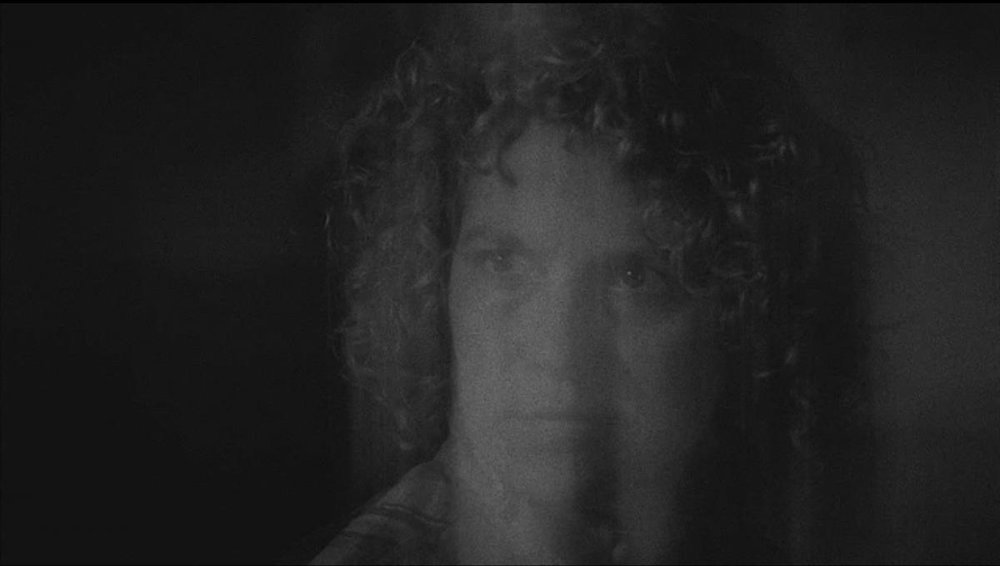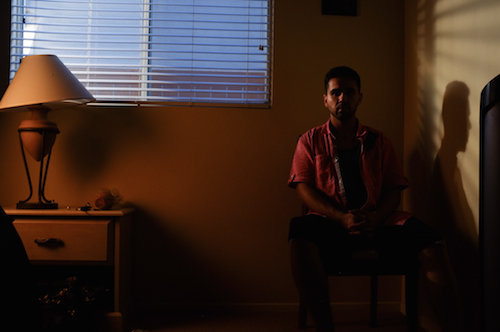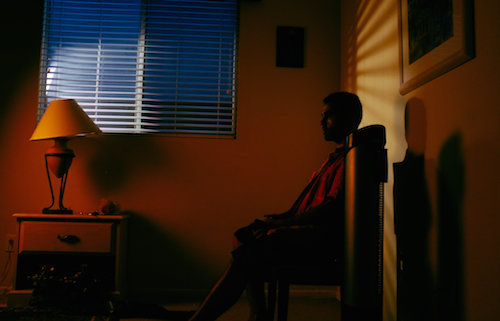
Ben Brahem Ziryab
Basic Member-
Posts
146 -
Joined
-
Last visited
Everything posted by Ben Brahem Ziryab
-
When contact printing the OCN (with no IP/IN steps) what are some ways to increase the contrast and deepen the blacks? The methods that I know of are no longer available like printing on Vision Premier and ENR/ACE/CCE/OZ. I try to avoid skip bleach all-together because it desaturates the color in the process.
-
Hi, Does anyone recognize this problem? See below Looks like a double image that moves during the shot. From a test shot with an Aaton LTR 54 that has been sitting around for a while. Looks like it is an issue with the registration or shutter out of sync. Camera could use some servicing.
-
Thoughts on Film and Digital
Ben Brahem Ziryab replied to Brent Powers's topic in General Discussion
If I may add to the discussion: First, I am getting a bit tired of the idea of a "film look" as if celluloid film only has one look. I think it is safe to say that 8mm and 15-perf 65mm have very different characteristics. Second, there are many variables that affect the look of a project beyond the camera/film (I would like to think the artistry of the director, DP and art director) I personally like spherical 35mm over spherical Alexa because of its color rendition, texture and smoother tones (among other reasons), but even that depends on the story, the limitations of the project and what you are trying to achieve. I can only agree with David. There are tons of variables that contribute to the cinematography of a film beyond the origination format. -
How to light this? (light diagram)
Ben Brahem Ziryab replied to Francesco Andreoli's topic in Lighting for Film & Video
Could it not be that the reflection is in fact the tungsten light source, but is stretched out by the anamorphic lens? The intensity of the spectacular highlight suggests that the light source is fairly large, but at a distance away from the bulb. If the light source was aimed directly at the camera, it should appear differently. -
What is the difference between these two machines, other than speed and image stability? I know the Arri Scanner captures a broader density range, because it captures the image twice (once for the shadows and once for the highlights). The Spirit 4K is a "one light" so you chose where the density range will fall. What else?
-
That's great, Brian. I am always very happy with their work. Here is a couple of images from a film that I shot on Super 16, scanned in 3.5K and mastered in 1080p.
-
Brian, A 3.5K pin registered scan is going to give you the best image and grain structure for Super 16. Even for a 2K master. Robert Houllahan at Cinelab is your contact.
-
Zone System as applied today
Ben Brahem Ziryab replied to Ben Brahem Ziryab's topic in Lighting for Film & Video
What I think I'll do is shoot a grey card on V3 to see what I am getting for each exposure increase and decreasing of one stop. Then draw out two charts; one with the tonal range of the negative and another with the Rec 709 tonal compression. These could be programmed into the Sekonic L758-Cine to create a "latitude" display, or I could simply mark them on a analogue spot meter. As John Clark pointed out, the Zone System is designed for black and white film only, so I don't know if you can establish zones that represent various brightness levels for every color. The idea is that I could use the system to communicate with the production designer on how dark I want a certain wall or table just by showing that person a "zone" that corresponds to a exposure value based on the tonal range of the film stock and release format. -
Zone System as applied today
Ben Brahem Ziryab replied to Ben Brahem Ziryab's topic in Lighting for Film & Video
David, What if you want to light a hallway behind the subject so parts of it appear black (but not pure black, more like a Zone I that is minimum density) and without the light falling off, while your subject's skin is significantly brighter than middle grey. How would you systematically approach something like that using your light meter and knowledge of the film stock? -
Hey guys, I have pondered over the Zone System and how it can use be used to determine proper exposure, based on normal development of the negative. Most spot meters (not just the Zone IV modifications) will use a interval of one on the meter scale, which equals doubling or halving of the luminance, or "one stop". Every one-stop change is a change of one zone on the exposure scale. So, if the subject area reads 7 on Zone V, but you want it to fall on Zone III, you simply dial your meter two steps to the left. Simple enough. The conundrum is this: Let us assume that we are scanning the negative, not adding contrast and not making a print. A negative, when scanned, has around 14 stops of dynamic range, so the distance in stops from the toe of the curve to the shoulder is 14 steps. In addition, Zone 0 to Zone X represents a full range from pure black to pure white -- not the dynamic range. The dynamic range only refer the useful values that lies between Zone I to Zone IX, whereas the textural range is from Zone II to VIII. The Zone System uses a value scale of 10 (Zone 0 to Zone X) -- a 10 exposure scale from pure black to pure white. So, how can we anticipate/visualize the negative density value using the Zone System on a 14 stop negative? Perhaps the Zone System can be modified, so we increase or reduce the exposure by one and a half stop for each zone placement over/under Zone V. In other words, use one and a half stop intervals instead of one-stop intervals. On this scale, a Zone 0 rendering would fall seven and a half stops below Zone V. Thanks. Ben
-
Anyone looking to get rid of their Arri SR-3? Thanks! Ben
-
Selling my Sachtler 7+7 Fluid Head with 150mm Base. Max capacity: 110lb (50kg) +90° to -60° tilt Includes QR plate, pan arm, tie down, two 3/8″ screws, and flight case. Price: Only $2995 Best Regards, Ben Brahem benbrahemdp@gmail.com (858) 342-7890 Pick up in San Diego Can drop off in Orange County and Los Angeles County
-
Tyler, I remember contacting Panavision about VV once. They actually don't carry them.
-
Thanks. It's an MOS shoot. Who rents the 765 in LA?
-
Hi, Does anyone here know someone with a 65mm camera in the L.A/South Cal area? I tried Panavision Woodland Hills, but their cameras are out on long term jobs. Thanks! Ben
-
Hello Pro. DP's and Gaffers out there, I am lighting a bedroom in a dialogue scene between a mother and her schizophrenic child. We want the scene to feel like its taking place during a sunset, but we want dramatic lighting. We also want to create a contrast between a warm interior and a slightly blue exterior. I did a simple lighting test on the actual location using two basic 2K tungsten lights. First picture is the lighting setup taken during the afternoon, where the second and third are taken right after sunset (a little photoshopping was done on the last two -- i changed the window color to a cyan blue and pushed the contrast). I put one 2K open face with a chimera on it,at the left of frame, and another 2K open face just outside the window as you can see. The open face is gelled orange, and white balance is set at 3200. I exposed at F11 (about 2 stops under N). If I want to follow the basic idea, any suggestions on how I can make the lighting even better? I am shooting the film on Kodak 500T, 5219. Any ideas greatly appreciated!
-
I came across a scene in "12 Years a Slave" photographed by Sean Bobbitt, BSC, and became curious as to how someone else might recreate the lighting in that scene, if they were working with white actor's skin tone, as opposed to black...Yet still create the same photographic look and feeling of being enslaved under the deck of a boat. Watch the scene below: https://www.youtube.com/watch?v=eMd75bL6mB4 If you were to do exactly the same lighting but with white skintones, how would you do it? How would you break up the light? What fixtures would you use? And how strong (film stock rated @ 500 ASA) ?
-
Anyone selling 35mm recans or knows someone who does? Looking for any of the following stocks: Kodak 5219, 5213, 5218, 5217 OR Fuji Eterna 8573, 8583, 8553. All in the range of 200T to 500T. Price per foot cannot exceed $.12 Willing to pay shipping cost! Thanks
-
Or you could shoot Super 16 and scan it using a proper film scanner such as the Arriscan or Scanity. The files you get, whether DPX or prores, will give you a large amount of control over both contrast, blacks and color saturation. If you want to finish on film, you can always create the look digitally and record back to film with the arrilaser. I'd be interested in seeing how it all turns out. Nolo Digital Film in Chicago will give you 2K scans at 2 cents a frame or 4K scans at 4 cents a frame. 16 or 35. The book rate with Fotokem, on other hand, is 15 cents a frame plus a data management fee.
- 10 replies
-
- ENR
- silver retention
-
(and 3 more)
Tagged with:
-
Dear all, What's a good alternative to a 10K or a 5K Tungsten Molebeam? We had two on our lighting package, but thats not the case anymore, since one of them is going out. The desired effect is a sharp parellel beam of light shined through a window frame for a "spread of light". The shoot is in Hungary. There won't be any Xenon arc lamps available. Thanks - Ben
-
I am doing an exterior short film near Death Valley in a few weeks (shooting on 4-perf anamorphic). I am trying to decide if my storage of 5219 (with an 85) will do the job. I am worried that 5219 will be too grainy/saturated for exterior daylight (even on 4-perf). I am going for a slightly desaturated color palette. Have anybody tried shooting 5219 on an exterior daylight? Comments on grain/saturation? Will I benefit greatly from shooting 5207 or 5213 with an 85 on it? I am planning to carry 5219 for sunrise/sunset shots. Thanks.
-
Requiem for a Dream: Extreme Close-Ups
Ben Brahem Ziryab posted a topic in Lenses & Lens Accessories
Hi, What kind of lens extension/tool would you want to use for extreme close-ups of eyes and objects? Requiem for a Dream does this very well, as you can see below. I am working with a set of Zeiss UltraPrimes and I am in the hunt for an affordable filter or tool that can get the lens focused at a very close distance for the same identical effect.







